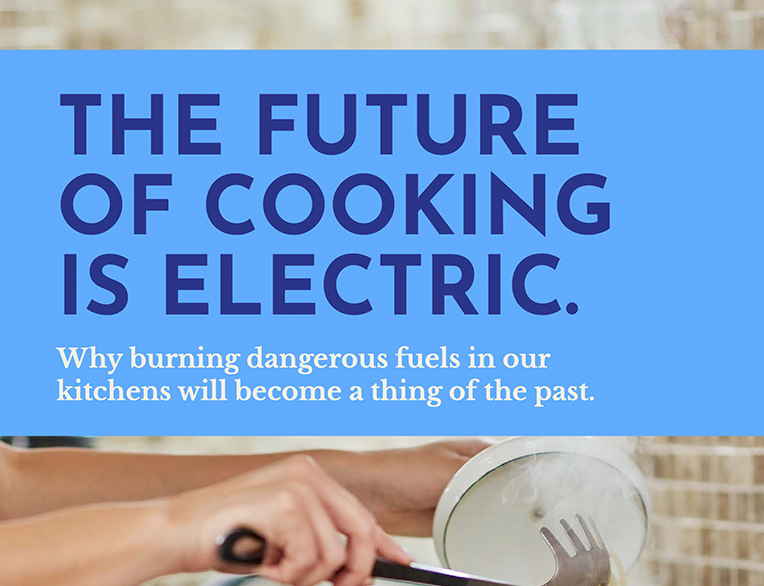

Global Cooksafe Coalition Resources
Take a deeper dive into the safe cooking movement.


Frequently Asked Questions
The Global Cooksafe Coalition is working to promote safe sustainable cooking for everyone. That means affordable, fossil-fuel-free cooking, using energy-efficient appliances, powered by rapidly decarbonising grids or distributed renewable energy.
Global Cooksafe Coalition members and partners support:
- By at least 2030, all new kitchens in OECD countries will use energy-efficient electric cooking appliances, powered by a rapidly decarbonising grid or distributed renewable energy.
- By 2035, all new kitchens worldwide will use energy-efficient electric cooking appliances, powered by a rapidly decarbonising grid or distributed renewable energy.
- By at least 2040, all existing kitchens in OECD countries will use energy-efficient electric cooking appliances, powered by a rapidly decarbonising grid or distributed renewable energy.
- By 2045, all existing kitchens worldwide will use energy efficient electric cooking appliances, powered by a rapidly decarbonising grid or distributed renewable energy.
- An immediate, urgent increase in public finance allocated to electrification of cooking in lower and middle income countries.
- Fiscal policy supporting households and small businesses to transition to energy-efficient electric appliances.Fiscal policy assisting vulnerable health cohorts to access effective rangehoods.Improved ventilation standards in national buildings codes.
The grid is decarbonizing rapidly and the price of renewable power is plummeting. While some grids already offer cleaner power than gas bottles, governments globally are taking action to decarbonize their electricity sector to meet the goals of the Paris Agreement to limit global warming to well below 2 degrees Celsius. Electrifying homes and businesses will hasten the demand for safe, renewable power and decrease demand for dangerous fossil fuels, helping us limit global warming.
Most of what you have in your cupboard is perfect for induction. For non-conductive metals – like aluminum Bialetti coffee makers, or pure copper pans – you can use an induction converter, a simple metal plate which conducts heat to your cookware. You’ll find your pans might enjoy a longer life, with less scorching from direct contact with flames and less need for intense cleaning.
In the past, electricity wasn’t considered a practical solution for communities experiencing energy poverty in low- and middle-income countries. But solar is now the cheapest power in history. Expert research shows that solutions like electric pressure cookers and low-wattage induction cooktops are cheaper than LPG in many regions.
This is not to diminish the efforts of communities working to deliver the most immediately-available cleaner cooking solutions in local contexts, from ethanol and rocket stoves to community-scale biomass digesters. However, we must recognize that renewable energy has transformed solutions for low- and middle-income countries, and this offers the opportunity to integrate safe cooking solutions into national energy plans and affordable, longer term solutions connected to delivery of Sustainable Development Goal 7 (SDG7).
The grid is decarbonizing rapidly, and solar energy is now the cheapest source of power in history. There is no comparing renewable power to gas when it comes to health and safety or climate change impacts. Gas is a fossil fuel that drives climate change, whereas renewable power is clean, affordable and available now.
Ventilation helps reduce exposure but gas cooking leaks harmful chemicals even when it is not in use. Recent research from the Harvard T.H Chan School of Public Health found unburned gas leaks contain 21 different hazardous air pollutants, including benzene, toluene, ethylbenzene and hexane.
Yes, making the switch to electric cooking can reduce power bills. The cost of gas has steadily risen over the past few decades while the cost of renewable energy is plummeting.
Electric cooking technology like induction is also more efficient than gas cooking. Induction stoves have 85% efficiency, compared to 32% efficiency for gas, according to the US Government’s Energy Star Rating. Using less energy means paying for less energy.
The expansion of gas pipelines and new gas infrastructure is too costly for low- and middle-income countries. Electric cooking is cheaper and more energy-efficient than LPG in many regions facing energy access challenges.